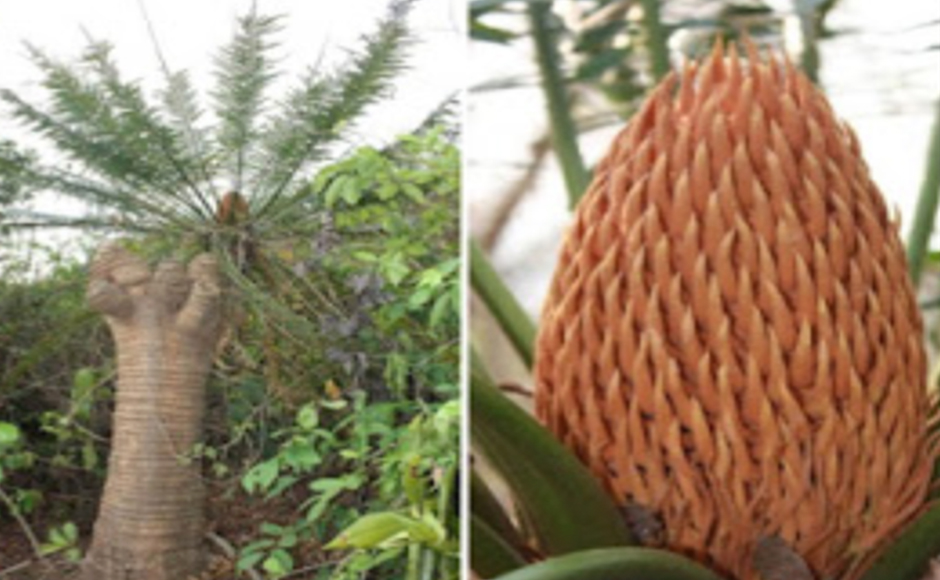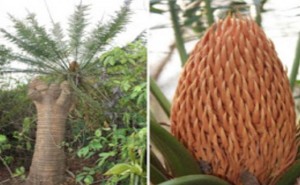
Two new species from dinosaur age, discovered by Indian scientists


The discovery of the two new species was published in July issue of Asian Journal of Conservation Biology. Indian scientists claim to have discovered two new Cycads species of plants in Odisha northern Eastern Ghats of India Cycas nayagarhensis, C. orixensis and Orixenses subsect.nov, which were dominant some 201 million to 145 million years ago, popularly known as the Jurassic period.
Dr Rita Singh, Indian cycadologists, Associate Professor, USEM, Guru Gobind Singh Indraprastha University, Dwarka 16C, New Delhi – 110 078 (India), and her two students – P. Radha of Osmania University, Hyderabad and J.S. Khuraijam (NBRI, Lucknow) – is the result of eight years of research in the state.
Cycads are considered to be an ancient group of seed plants which have crown of large compound leaves and a stout trunk. They are regarded as living fossils.
Cycas is the type genus and the only genus recognised in the family Cycadaceae.
‘The world over there are 111 species of Cycas and only nine species were reported from India. With the addition of these two new species, there are now 11 species of Cycas in India,’ lead researcher Dr. Rita Singh.
Radha said although Cycads species are now a minor component of the flora in tropical and subtropical regions, they were a common sight in many parts of the world during the Jurassic period.
Khuraijam said: ‘The unique and endemic species we discovered in Odisha are Cycas orixensis and Cycas nayagarhensis. While Cycas nayagarhensis is endemic to Nayagarh district, Cycas orixensis is distributed from Mayurbanj, Kendujhar, Denkanal, Angul, Boudh and Ganjam districts.’
‘These two species are unique among all the Cycas species worldwide in having forked tip of the microsporophylls, the male reproductive structure,’ he added.
The two species can easily be differentiated from each other by comparing the size of their trunk, male cone and female reproductive structures. They are locally known as Aruguna, Oranga, Oruguna and Odissimari.
Both the species are under severe threat due to clearing of forests, over-harvesting of ovules or seeds, trunks for religious and cultural practices.
Khuraijam said these species need urgent conservation.
